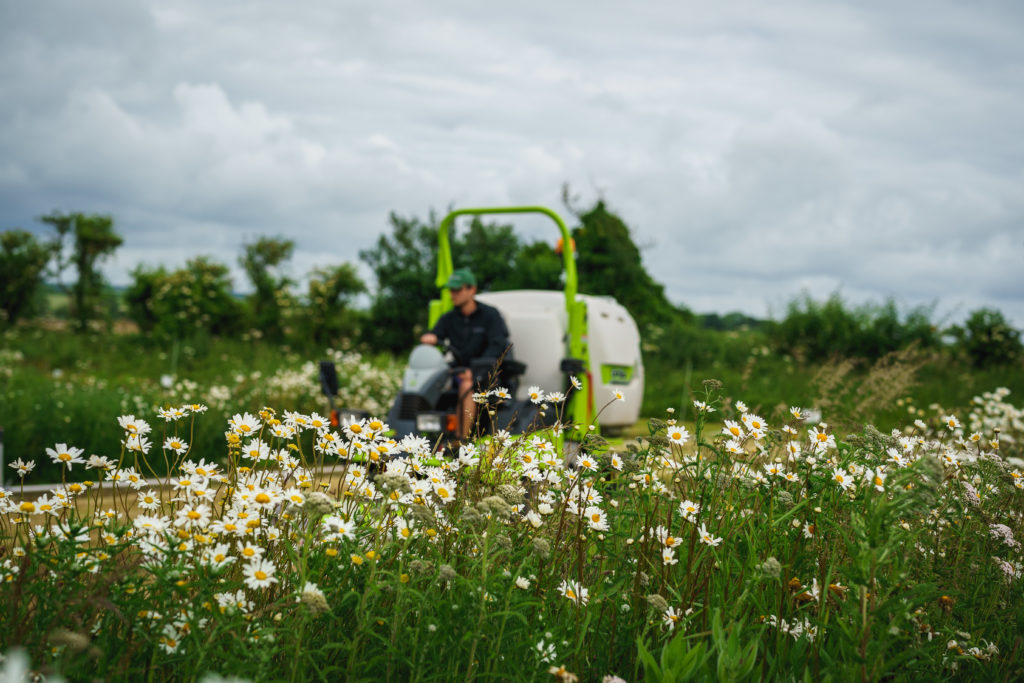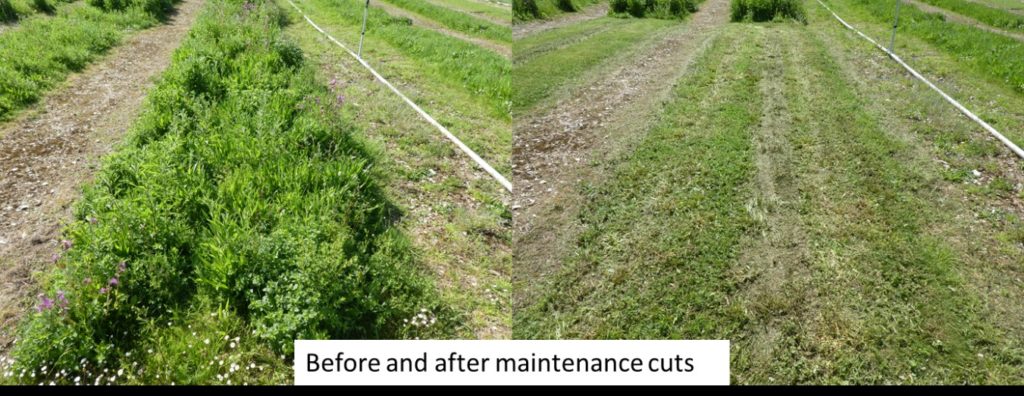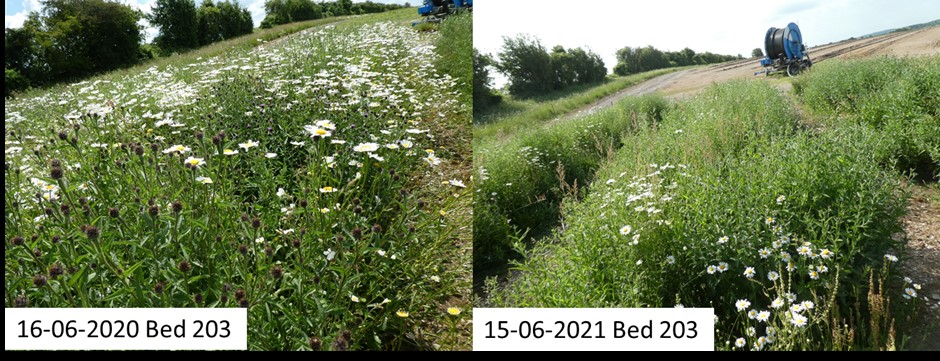Take a sneak peek behind the scenes…
Research and Development (R&D) is a pivotal part of everything we do here at Wildflower Turf Ltd.
Our product enhancements and new product development initiatives are driven by our meticulous R&D department, headed up by Dr Janine Robinson, and we invest heavily in order to continue to push boundaries and innovate.
Our monitoring process allows us to generate a large data set that contributes to an evidence base of understanding. We will continue to strive to establish Best Practice protocols for Turf Management and we look forward to sharing our learnings with you over time.
The spring and summer months are an especially busy time for us as the growing season provides many insights. Growth will differ year-on-year and variations in the weather can influence a meadow considerably; there is some delight to be taken from not quite knowing what a meadow will look like from one year to the next. There is also great joy to be had as each season adds a new complexity and dynamic to the changing wildflower landscape.
Our R&D plots are located at our Hampshire growing site and we’ve collated some of our observations from the spring and summer months of 2021 to share with you. The below is a compilation of our observations from our Wildflower Turf Landscape 34 plot, with beds receiving two maintenance cuts during the growing season. Our trial beds receive a variety of maintenance cuts in order for us to monitor the effect these cuts have on the turf as part of our research trial programme. We use a variety of one and two cut regimes, including cuts in March and late May (although this year the late May cut was completed 1st June due to weather conditions), and June and Autumn. Our one-cut regime is completed at the end of the growing season.

General Flowering Observations of Wildflower Turf Landscape 34 (Research Plot)
May 2021
Red campion, Cowslip and Salad burnet are flowering. Ox-Eye daisy vegetation is growing but not yet flowering.
June 2021
Early June – Lots of Knapweed clumps of vegetation, not yet flowering. Everything is of a much lower height this year, with significantly less Ox-Eye than in 2020, when there was a dense canopy of the daisies present.
Mid-June – No real change to flowering but the canopy is very dense.
July 2021
Early July – We are seeing some collapse from the weight of vegetation and rain.
Mid July – Where there was collapse in the uncut beds, the openness is allowing further regrowth. The bed that had a cut scheduled for late May (completed 1st June) has lots of variety coming through and is beginning to flower; Marjoram, Birdsfoot trefoil, Black medic, Campion, and Clover, and all keeping a low height. The beds that were cut later in June are recovering well with lots of fresh green growth, and no flowering as yet.
The bed that received a maintenance cut in March and at the beginning of June (no autumn cut) is looking good, with plenty of diversity. It recovered quickly after its cut in June and is now looking very healthy.

August 2021
Mid-August – The bed that received March and June maintenance cuts is flowering well with plenty of diversity and height <50cm.
September 2021 & Conclusions
The main observation from this year is the difference in the number of species flowering in the Landscape 34 compared to previous years. This is potentially due to the variable weather conditions experienced this year. Very few Ox-Eye daisies were seen in these plots, but the height of the uncut plots was still high and dense with knapweed (although this did not appear to flower extensively). There has also been less Yarrow and Carrot visibly flowering.

How have your meadows differed during 2021? What did you notice? Where were the similarities and differences? Do drop us a line at wildflower@wildflowerturf.co.uk and share your experiences with us – we’d love to hear your observations.